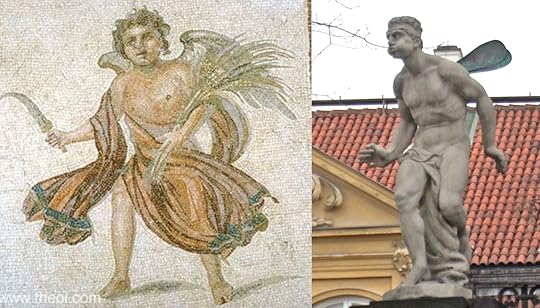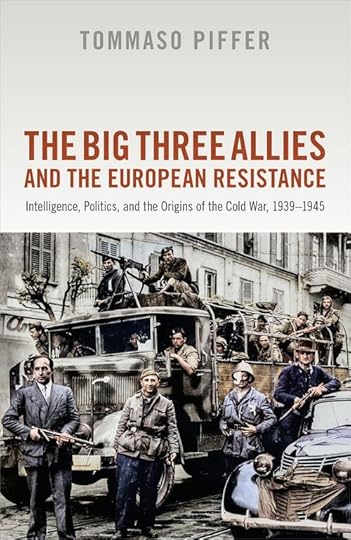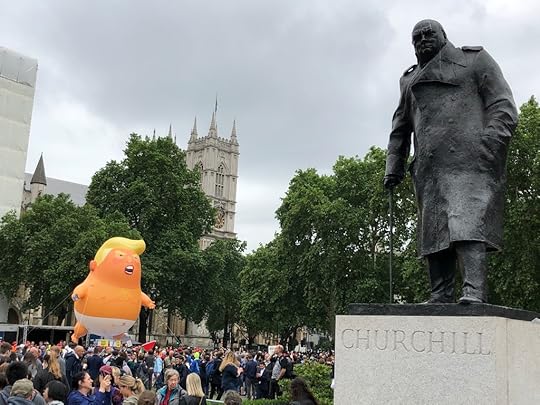Oxford University Press's Blog, page 14
November 8, 2024
Remembering the fallen

This year as usual, on either Remembrance Sunday or Armistice Day, many people in the UK will gather at a local war memorial to remember the country’s war dead, those of the two World Wars and other conflicts since 1945. Lines from Laurence Binyon’s famous 1914 poem “For the Fallen”, beginning ‘They shall grow not old, as we that are left grow old’ will be read and its promise, ‘We will remember them’, will be intoned by the assembled as a civic duty. The whole commemoration has such an air of eternity about it that it is easy to forget that remembrance has a history and it was not ever thus.
Many of Remembrance’s rituals, including poppies and the Two Minutes’ Silence, go back to the Great War. The time and date chosen are a deliberate marker of the end of that war, the guns falling silent at 11am on 11 November 1918. And yet in 1945 there were national debates about whether to inaugurate a separate commemoration for the fallen of the Second World War, with a host of competing proposals, including Victory in Europe Day (8 May) and Battle of Britain Day (15 August). Ultimately, Armistice Day or its nearest Sunday triumphed out of a desire to link together the sacrifice of the dead in both wars as undertaken for the same principles against the same enemy.
The erection of local war memorials, now a seemingly fixed feature of almost every community in the UK, had a more contentious history, for they were substitute grave sites given the government’s policy of refusing to repatriate the war dead—in previous wars the wealthy had been able to return the bodies of their beloved for burial in Britain. A long and sometimes acrimonious campaign was waged by those who wished to bring back the nation’s sons. The Countess of Selbourne branded the ‘conscription of bodies’ as a ‘tyrannical decree’ and the ‘contempt of liberty’, but the government was unmoved. Noting that only the wealthy few could pay to bring home their dead, it clung to a principle of equal treatment to represent a common sacrifice. The official ban on repatriation remained until the Falklands War in 1982.
By contrast, the most striking feature of modern war memorials, the naming of the dead, met with popular support. It was a vast exercise in bureaucracy. Overseas, principally in Flanders, the names of 1,075,293 British and Imperial soldiers were carved in stone in the cemeteries and memorials of the War Graves Commission (another invention of the war, founded in 1917). This exercise in (to adapt the phrase of the historian Thomas Laqueur) hyper-necronominalism, naming the dead, was paralleled at home by local communities erecting their own war memorials. Committees were established, names collected, and decisions made not just about the form of the memorial but who to include (a particular issue was those who died of their wounds after November 1918) and in which order, alphabetical or by rank.
The scale of the memorialization effort is notable—Rudyard Kipling compared it to the erection of the pyramids by the Egyptian pharaohs—but that has often obscured its roots. Naming all the dead, rank-and-file alongside officers, was not new in 1914. Significant efforts had been made in the Boer (or South African War) of 1899–1902 to erect graves and memorials naming all the dead, and that was merely a development of earlier practices, including the Crimean War, 1853–6: by the end of that conflict, British forces had created 120 war cemeteries of varying sizes along the western shores of the Black Sea, most of them identifying the buried by name or initials. Naming the dead was a developing tradition across the nineteenth century, not, as is often believed, a new form of memory for new forms of industrial slaughter in the twentieth century. A contrast is sometimes drawn between the anonymity of the rank-and-file dead of the Battle of Waterloo in 1815 and the preservation of the names of the dead from the Western Front a century later. But perhaps the first British war memorial to name all of the dead, officers and ordinary soldiers, comes from Waterloo: that of the fallen of the 12th Light Dragoons naming 2 sergeant-majors, 4 sergeants, 3 corporals, and 38 privates, which by 1823 had joined a host of memorials in Waterloo church. The roots of Remembrance Day stretch back through the trenches of the First World War to another conflict in the soil of Flanders a century earlier.
An appreciation of the slowly evolving history of war commemoration and remembrance may better equip societies to face the challenges of future conflicts, notably the extensive use of drones and the vastly increased scale of civilian casualties since 1918. For questions of how best to remember are a key part of how to comprehend and perhaps even how to prevent war. Remembering, as they say, is always about the future.
Featured image by Raelle Gann-Owens via Unsplash.
OUPblog - Academic insights for the thinking world.

November 7, 2024
In the spirit of Oswald

It’s been more than 60 years since the assassination of John F. Kennedy. Those who remember where they were and what they were doing on that fateful day in 1963 are becoming smaller in number. Since that afternoon in Dallas, Lee Harvey Oswald has been viewed as a glory-seeking sociopath who, according to every official account, acted alone. No one offered him the adulation or hero worship he so desired.
That is, perhaps, until now. For today’s potential assassins and mass shooters, there could not be a better role model than this isolated extremist seeking fame and achieving it, albeit the short-lived kind. Now, among certain young people, Oswald is achieving the admiration he sought.
Thomas Matthew Crooks’ thinking may have been remarkably like Oswald’s when he took the shot at Donald Trump. Both were outcasts by all accounts—bullied, isolated, and in desperate need of validation. Oswald’s bullet hit his target; Crooks’ only grazed his. But while the distance from Oswald’s nest in the Texas Schoolbook Depository to Kennedy’s limousine was some 265 feet, Crooks’ bullet had to travel roughly 400 feet. Crooks’ shot was more difficult and surprisingly accurate in light of the fact that years earlier he had failed to make the high school rifle team because he was such a bad shot.
Oswald’s name surfaced again in reference to rooftop shooter Robert Crimo III, who killed seven people and injured dozens of others during a Highland Park Fourth of July parade in 2022. A famous photo of Crimo features a newspaper announcing Oswald’s murder taped to an otherwise bare wall behind him.
Mass shootings have become commonplace in the modern world. But as every incident and shooter is analyzed, new common denominators are emerging—a link between shooters of the past and those of the present. More often than not, these perpetrators are neither insane nor delusional. But they are political extremists, with their beliefs constantly reinforced by others of the same mind: their violent acts are in fact due to their extreme overvalued beliefs.
An extreme belief “is one that is shared by others in a person’s cultural, religious, or subcultural group. The belief is often relished, amplified, and defended,” forensic scientist Tahir Rahman states. “An extreme belief may grow more dominant over time, more refined, and more resilient to challenge. Thinking becomes simplistic, binary, and absolute. The individual has an intense emotional commitment to the belief and may carry out violent behavior because of it.”
Extreme Overvalued Beliefs include:
The 9/11 attacks;Unabomber (Ted Kaczynski);Oklahoma City bombing;Boston Marathon attack;Dylan Roof (hate crime);Thomas Matthew Crooks (attack on former president Trump).The individual has an intense emotional commitment to the belief and may carry out violent behavior because of it.
Crucial to Rahman’s discourse is the fact that the post 9/11 world set the stage for a breakthrough—the Terrorism Radicalization Assessment Protocol (TRAP-18), developed by psychologist and FBI consultant Dr. J. Reid Meloy. The TRAP-18 is a structured and scientifically tested approach for threat assessment that has undoubtedly saved numerous lives. Importantly, the TRAP-18 helps professionals identify potential attackers before the violence starts. Behaviors of potential assailants fall into two categories: distal characteristics (of which there are 10) and proximal warning signs (of which there are 8). Distal characteristics include personal grievances, failure to affiliate with a group (rejection from those with like beliefs), and criminal violence. Proximal warning signs include things like fixation, a sudden burst of energy in the perpetrator, or a directly communicated threat.
Oswald was not unknown to the state department and other federal agencies of 1963. If FBI and Secret Service units had access to current threat assessment tools, he might never have made it as far as his sniper’s nest in the Texas School Book Depository. To thwart potential future offenders, TRAP-18 needs to be utilized to an even greater degree, Rahman feels.
Threat AnalysisTo do this, Rahman has created a four-part threat analysis to identify facts and circumstances that would lead a reasonable person to believe that an individual is committing or is attempting to commit a criminal offense (poses a threat to self and/or others). This assessment tool takes away personal bias and instead focuses on actual behavioral signatures, in doing so avoiding profiling people based solely on their race, ethnicity, etc.
1. Threats due to psychotic delusions (fixed, false, idiosyncratic)“My neighbor is a space alien and is trying to kill me.”
“Satan has instructed me to kill them.”
Commonly seen in: Schizophrenia, Bipolar Disorder with psychosis, Depression with psychosis, Drug-induced psychosis.
Treatment: Secure weapons with law enforcement, antipsychotic medications, emergency civil commitment to a mental health facility, case management.
2. Threats due to Extreme Overvalued Beliefs“I am going to be a professional school shooter.”
“The West is at war with Islam.”
“Black people are replacing White people.”
Intervention: Secure weapons with law enforcement, treat co-occurring problems (e.g. mood, anxiety, drug use), crisis response teams, unique behavioral management (e.g. family, group, and individual therapy), case management.
3. Threats due to obsessions (intrusive, unwanted thoughts)Usually pose a low risk of harm to others.
“I can’t stop thinking that I might hurt someone.”
Treatment: OCD medication, talk therapy, OCD foundation.
4. Threats due to addictive/behavioral issues, alcohol/drugs, paraphilias, domestic violence, or personality disorder (e.g. Psychopathy)Treatment: Secure weapons with law enforcement, drug rehabilitation centers, medication- assisted treatment, (family, individual, and group) therapy. Sometimes jail or prison is the only answer.
This assessment tool takes away personal bias and instead focuses on actual behavioral signatures
Since 2014, the U.S. has witnessed more than 4,000 shootings involving multiple victims. More often than not, mental illness or delusional thinking is blamed. But in truth, what lies beyond these facades may be as diverse as the cultures from which they spring.
Extreme Overvalued Beliefs lie at the heart of many incidents. Once that is recognized, the steps toward preventing radicalization may well be doable.
Featured image by Dakota L. via Wikimedia Commons CC BY-SA 4.0.
OUPblog - Academic insights for the thinking world.

November 6, 2024
All the way back: “South”

The previous story was devoted to the word north. I wanted to follow with something about Halloween (ghosts, witches, pumpkins, mopsticks, or Celtic mythology), but last week was too early, and this week is too late: October 31 did not fall on a Wednesday. Therefore, I am picking up where I left off on 10/31.
South is a word of “disputed etymology.” Several hypotheses of its origin exist, but none is fully convincing. Those who have read the story of north may remember that the original meaning of that term of direction is supposed to mean either “left” or “below.” “Left” is the preferred candidate, which (as I indicated) does not mean that the truth has been found. Anyway, people are supposed to be rational beings. It is no wonder that Heinrich Schröder, a distinguished historical linguist, one of those who traced the idea of “north” to the concept “left,” reasoned so: since north once upon a time meant “left,” south should be expected to mean “right.” (I cannot miss this chance and will meander a bit. Heinrich Schröder, 1863-1937, wrote numerous inspirational works. His son, 1893-1979, Franz Rolf Schröder, followed in his father’s footsteps and also left his mark on Germanic philology. However, like many of his colleagues, he joined the National Socialist Party and was not allowed to teach after 1945. Sadly, numerous scholars yielded to that fatal temptation. Last week, I mentioned the great Dutch philologist Jan de Vries, an outstanding researcher and an ardent Nazi. The public, aware of every step of popular rappers and comedians, knows nothing about even the most distinguished linguists. Therefore, I hope to be forgiven for this digression.)
As pointed out last week, the oldest words for the four cardinal points often came down to us as parts of adverbs meaning northward, southward, and so forth. Apparently, people were more interested in having words designating the influence of the north, east, south, and west and in terms of orientation than in coining the names gracing our dictionaries. For Schröder south was just the opposite of north, but why should we assume that both words were coined at the same time and by the same speakers, motivated by similar impulses? They may have been independent creations!
Also, in his paper, Schröder cited several examples of “right” being related to “south” in the languages of the world, but none of them is Old Germanic. His son developed this subject and defended his father’s hypothesis. The root of the Germanic word for “south” must have sounded approximately like sunth-. Old High German sund– is almost that ancient form. (In today’s German, south is Süden, under the influence of Dutch zuid.) The sounds u and w regularly alternated in the past. H. Schröder compared sunth– with Old English swīthra “right,” and interpreted “right” as “the direction toward the east.” All this is rather plausible, except that one would have preferred a closer similarity between the two words.
Here are a few other ingenious suggestions about the origin of the word south. The form sunth– has the vowel u in the root. In my posts, I occasionally refer to the idea of ablaut. Ablaut means “alternation of vowels,” for instance, in ride ~ rode ~ ridden or come ~ came. Sometimes a syllable may do without a vowel. Thus, we have two syllables but only one vowel in English isn’t, because n performs the role of a missing syllabic vowel. This situation has been called “the zero grade of ablaut.” In older Germanic, the zero grade often developed into the vowel u. The form sunth-, cited above, has u before n, that is, the zero grade, with u being a filler for this “zero.” The older root was snt. Next, we are reminded of the indispensable s-mobile, or “movable s-,” which like the wind itself, “blowth where it listeth” (in our case, emerges in front of the root for no predictable reason). If the root snth had movable s, the remainder (nth) can perhaps be compared with Greek nótos “south, south wind.” I have little enthusiasm for this reconstruction, but the truth is hidden, and every more or less reasonable suggestion counts.
 Eurus, the east wind, and Auster, the south wind
Eurus, the east wind, and Auster, the south windImage 1 by Virginia Museum of Fine Arts, Catalogue No.: Richmond 51.13 via Wikimedia Commons. CC BY-SA 4.0. Image 2 by MM via Wikimedia Commons. Public domain.
Like many others, the American etymologist Francis A. Wood looked for the answer in a different direction. Yet, he also cited the Latin word auster “south wind” but traced it to some ancient root like awes or ēwes, with the primary meaning “wave, roll, rise,” allegedly descriptive of both fire and water. In English, ooze (from wōs) emerged as part of this group. South has of course a different root, but Wood compared it with English sound “an inlet of the ocean” and ended up with the by now familiar root snt. South, he suggested, once meant “a wind that brings moisture.” No one seems to share Wood’s idea, though in the guessing game we have viewed, it does not look less realistic than some other conjectures. Before Wood, German scholars also compared south and sound “body of water” but interpreted the adverbs with this root as meaning “from the direction of the southern sea,” that is, “from the Mediterranean Sea.” Heinrich Schröder, who did not know Wood’s paper (it appeared only two years before his own) and who, as we have seen, had a different opinion, considered the derivation by his German colleagues “not worse than the others.” He was probably right.
 This could be Pequod, moving southward in pursuit of Moby Dick.
This could be Pequod, moving southward in pursuit of Moby Dick.Image by J.J. O’Neill, Canadian Museum of History via Wikimedia Commons. CC BY-SA 4.0.
However, the hypothesis that won the day (though that day did not last too long) was much simpler. It derived south from the word for the sun, Germanic sunnōn-. South, according to this interpretation, meant “the sunny side.” In today’s etymological dictionaries, we usually find only a list of hypotheses, but if some solution is favored, it is the south/sun one. Our contemporaries keep adding ever new suggestions. Perhaps the root sunthra is related to Latin super (with reference to the “upper curve” of the ecliptic) or tothe present participle of the verb meaning “to be” (like German seiend “being”; then south means “being here; true”), or tothe Old Germanic word sinth– “way, road” (among the immediately recognizable cognates of sinth, the verb send comes to mind). And so it goes.
What a sad story! Even though the last chapter (west) has not yet been told, we can see how helpless we are while trying to guess the process of word creation in the remotest past. Yet we need not be surprised. Hundreds of words that appeared in the memory of the people still living are equally obscure. By way of comfort, one thing is more or less certain. As already stated, the names of the cardinal points seem to have emerged not as nouns but as adverbs denoting the direction of the winds or the sun. People (navigators?) needed terms meaning “from the north” (south, east, west). Some connection between those ancient terms and the sun is quite probable. It is the details that escape us, and the god of etymology is in the details.
Next week, I’ll be engaged elsewhere. The story of west will appear in two weeks, or in a fortnight, if you prefer. If everything goes per plan, in the coming days, the world will have enough entertainment (“fun”) without the blog “Oxford Etymologist.”
Featured image by Antarctica Bound via Flickr. CC BY-ND 2.0
OUPblog - Academic insights for the thinking world.

Orality, the book, and the computer: What happens to ‘literature’?

Orality, the book, and the computer: What happens to ‘literature’?
Coming into academia from the margins of Postcolonial Studies, when it was heroically striving to give an academic voice to indigenous cultures in the 1980-90s, I am aware that any celebration of the book is likely to be considered by some to be a subtle denigration of past traditions of oral composition and recording. What is worse, these days celebrating the book might also be resented by those who owe allegiance to futuristic forms of digital reading or what one can call visual orality—the use of mixed media, rooted in TV and film technologies, to tell stories and convey information. The book is in a terrible squeeze between those two positions. And yet, the book needs to be championed as the prime site of literature.
Before doing so, one also needs to face the fact that literature is not an idealist construct; it is not a form of immaculate conception in the human mind. It is shaped by the media of its recording. Literature in cultures of primary orality—if the word ‘literature’ can be used in that context, for its etymology denotes writing—was fashioned by the medium of breath which recorded it. For one, oral literature’s construction was often repetitive and contained many redundancies: you can find echoes of this even in written epics rooted in earlier oral cultures, such as Homer’s Odyssey, where the same god is heralded with the same description or phrase every time he or she appears in the narrative. Such repetition served various mnemonic purposes in a culture where the story had to be memorized, and there was no written text to consult. Moreover, the enunciation and preservation of oral narratives were mostly linked to their practical usage, either to record lineages, sacred stories, foundational myths, or to provide information about, say, foraging and shelter-building.
It is with the book—also in its earlier forms—that ‘literature’ slowly gets riven into ‘creative/artistic’ and vocational/professional/trade literatures. Whatever the drawbacks of such alienation, for ‘(creative) literature’ the book offers serious advantages. One can argue—despite the well-intended objections of many of my postcolonialist colleagues—that literature comes into being only with the rise of the book (including its early manuscript form). Here is a medium that, after breath and stone and other media, shapes what we now know as literature, because once words can be written down extensively, they can also be written down exclusively. The separation between literature and trade or vocational literature is easier to introduce, propagate, and sustain. This has drawbacks, but it also has serious advantages.
The book, contrary to what has often been claimed, is not just an elitist project; it is also a hugely democratic one. Historically, this can be illustrated with the example of India, where the earliest book manuscripts are associated with Buddhism and the non-Brahminical language of Pali, not with the Sanskrit treatises and epics of Brahminical Hinduism. Evidently, Buddhism—as a ‘religion’ with a middle caste following and without the institutional hegemonic privileges of Brahminism—used the written word extensively to connect across large spaces and periods.
The ancient Vedas, passed on orally from one consecrated Brahmin to another consecrated Brahmin, remained unchanged, and unrecorded in writing, until after the ‘bookish’ challenge of Buddhism and other such ‘sects.’ As Wendy Doniger notes, the Vedas, which were recorded orally (and, one can add, institutionally: through the Brahmin caste), were preserved in one iteration: “every syllable preserved for centuries, through a process of rigorous memorization.” Hence, there are no variants of the Vedas, in comparison to the later epics, such as the Mahabharata, which were recorded both orally and in writing, and so they exist in multiple versions. This brings forth the other democratic aspect of the book: its ability to escape capture and to survive as a minority position. For dissent to survive and be passed on in oral societies, it would require large areas of support. Individual dissent would exist, but it would never get recorded or passed on. The book, despite all kinds of inflicted burning, enables this. After all, the book can be moved across space and time, which means that it can more easily survive spaces and times hostile to its contents. This physicality increases the possibilities of literature, delinking it from social utility.
Another aspect to how the book enabled literature to be literature is embedded not in the words written down in a book, but, so to say, in the spaces between the words. “When you speak, you automatically stop thinking; it’s like being released from a contract,” says the authorial narrator of César Aira’s Ghosts. Unlike oral recitations and speaking, the book actually enables thinking, including dissenting or deviant thinking. The kind of contemplation it demands and permits is unique.
Aristotle held contemplation as the highest human capacity, ranking it above activity, because it involves thinking about the cosmos, which far exceeds in beauty and complexity any work of human hands. From his perspective, actually reading a book—the work of human hands—would not be true contemplation. I do not follow this Aristotelian definition of contemplation. Instead, I think of it more in terms of “deep attention”, a phrase that the Korean-German philosopher, Byung-Chul Han uses interchangeably with it.
But, interestingly, when one reads literature, one reads not only the words, accessed within the purported transparency of all other disciplines, but also between the lines and between the words. Literature depends not just on words, but also on silences, contradictions, and noise to convey its meanings. One can use the image of the blank spaces that lie between words and paragraphs and chapters in a book to illustrate this: in literature these ‘blank spaces’ also count, and the book, as a medium, enables us to pay deep attention to these ‘blank spaces’ too. At its best, one can argue that the book enables us, despite the limitations of language, to contemplate what Aristotle considered the “eternal”—that which actually escapes language. Eternal is not the word I would use for it, given its many misusages since then, but I think it will suffice to convey my point here.
Will this “eternal” nature still be available when we move to futuristic media (digitized reading and visual orality)? In a series of fascinating books, Byung-Chul Han doubts this, pointing out that the “medium of thinking is quiet” and noting that deep attention is not compatible with multi-tasking and incessant pop-ups, among other things. The book obviously also offers a greater capacity to slow down and focus than current futuristic replacements, and both of these are essential for deep attention. Visual orality, with its tendency to define our imagination—something capitalized, literally, by all those super-hero and fantasia films and computer games today—also curtails the borders of contemplation. There will obviously be some advantages to this shift to digitized reading and visual orality, but they are unlikely to accrue to our writing and reading of literature. This will affect our capacity to contemplate and pay deep attention to everything outside and inside us.
The ‘literature’ that will come out of it, if the book is largely abandoned as the primary medium for literature, will be very different from what we have had for a few centuries now, just as the ‘literature’ of primary orality was markedly different. It will affect the way we ‘contemplate’ the cosmos and how we understand ourselves.
Featured image by Freepik
OUPblog - Academic insights for the thinking world.

November 1, 2024
Winston Churchill’s 150th birthday [reading list]

Winston Churchill’s 150th birthday [reading list]
Winston Churchill was born at Blenheim Palace, Oxfordshire on 30th November 1874. His exploits as Prime Minister during the Second World War left an indelible mark on history. To celebrate 150 years since his birth, we have collated the latest research on Oxford Academic to read more about Churchill’s life. Whether you’re a history enthusiast or a curious reader, this collection offers a deep dive into the life and times of a figure who shaped the modern world.
 1. Blue Jerusalem: British Conservativism, Winston Churchill, and the Second World War by Kit Kowol
1. Blue Jerusalem: British Conservativism, Winston Churchill, and the Second World War by Kit Kowol
This radical re-interpretation of British history and British Conservatism between 1939 and 1945 reveals the bold, at times utopian, plans British Conservatives drew up for Britain and the post-war world. From proposals for world government to a more united Empire via dreams of a new Christian elite and a move back to the land, this book reveals how Conservatives were every bit as imaginative and courageous as Labour and their left-wing opponents. A study of political thinking as well as political manoeuvre, it goes beyond an examination of the usual suspects—Winston Churchill, Neville Chamberlain, etc.—to reveal a hitherto lost world of British Conservatism and a set of forgotten futures that continue to shape our world.
Read Blue Jerusalem: British Conservatism, Winston Churchill, and the Second World War
 2. “Winston Leonard Spencer Churchill” in The Titans of the Twentieth Century: How They Made History and the History They Made by Michael Mandelbaum
2. “Winston Leonard Spencer Churchill” in The Titans of the Twentieth Century: How They Made History and the History They Made by Michael Mandelbaum
After a long and prominent career in the British parliament and membership in several British cabinets, Winston Churchill became prime minister in 1940 as World War II was going badly for Britain. He rallied the country with eloquence, expressing a determination not to give in to Nazi Germany but rather to fight to the end. He also set about cultivating a relationship with the American president, Franklin D. Roosevelt, with an eye to securing American assistance and ultimately American participation in the war against Germany.
Read “Winston Leonard Spencer Churchill”
 3. “Civil War and Liberation in the Balkans: 1944–1945” in The Big Three Allies and the European Resistance: Intelligence, Politics, and the Origins of the Cold War, 1939-1945 by Tommaso Piffer
3. “Civil War and Liberation in the Balkans: 1944–1945” in The Big Three Allies and the European Resistance: Intelligence, Politics, and the Origins of the Cold War, 1939-1945 by Tommaso Piffer
In Yugoslavia, where Churchill had apparently imposed a clear-cut choice in December 1943, British policy was the subject of lengthy discussions. The problem here was what to do with Mihailović. The Soviets had scored an important point when Churchill shifted British support from Mihailović to Tito, but there too the game was far from over. Churchill asserted that Mihailović should be dismissed immediately and all British missions to the Chetniks withdrawn. Eden, on the other hand, thought it would have been sensible to achieve an agreement with Tito before throwing Mihailović overboard. Churchill had, in essence, failed to understand who Tito really was and what he wanted.
Read “Civil War and Liberation in the Balkans: 1944-1945”
 4. Rum, Sodomy, Prayers, and the Lash Revisited: Winston Churchill and Social Reform in the Royal Navy, 1900-1915 by Matthew S. Seligmann
4. Rum, Sodomy, Prayers, and the Lash Revisited: Winston Churchill and Social Reform in the Royal Navy, 1900-1915 by Matthew S. Seligmann
“Naval tradition? Naval tradition? Monstrous. Nothing but rum, sodomy, prayers and the lash.” When Winston Churchill was in charge of the Royal Navy from October 1911 to May 1915 he sought to make drastic reforms, coming into conflict with the naval officers over the traditions of the Royal Navy. Churchill was not just a major architect of welfare reform as President of the Board of Trade and as Home Secretary, but he also continued to push a radical social agenda while running the Navy.
 5. The Churchill Myths by Steven Fielding, Bill Schwarz, Richard Toye
5. The Churchill Myths by Steven Fielding, Bill Schwarz, Richard Toye
This is not yet another biography of Winston Churchill. It is instead an innovative study of how and why we think what we do about the figure we call ‘Winston Churchill’—and how generations of politicians, historians, and dramatists have manipulated this figure for their own ends. It is a book for those interested in ‘Churchill’ and how this figure has been put to use—as well as Britain’s past, present, and future.
Read The Churchill Myths
 6. Churchill’s American Arsenal by Larrie D. Ferreiro
6. Churchill’s American Arsenal by Larrie D. Ferreiro
The idea of a “special relationship” between Britain and the United States was articulated by Churchill after World War Two had ended, but for most of its history, the relations between the two nations were often as distrustful as they were friendly. This book tells the story of how a British and American scientific and technological partnership, one that started not long after Britain had lost its ally France and stood alone against Nazi Germany, developed these innovations, which could not be imagined before the conflict began, on an industrial scale.
Read Churchill’s American Arsenal
 7. “The Military and Diplomatic Strands” in The War Lords and the Gallipoli Disaster: How Globalized Trade Led Britain to Its Worst Defeat of the First World War by Nicholas A Lambert
7. “The Military and Diplomatic Strands” in The War Lords and the Gallipoli Disaster: How Globalized Trade Led Britain to Its Worst Defeat of the First World War by Nicholas A Lambert
As First Lord of the Admiralty during the First World War, Churchill oversaw the Gallipoli campaign. As the Western Front developed into a stalemate, Prime Minister Asquith announced a full review of strategic policy to be held during the first week of January 1915. There were major disagreements over strategy (within both army and navy high commands) and much lobbying ensued, with Churchill front and centre of the debates.
Read “The Military and Diplomatic Strands”
 8. “Churchill” in Storms over the Balkans by Alfred J Rieber
8. “Churchill” in Storms over the Balkans by Alfred J Rieber
Churchill pursued two traditional lines of British foreign policy. He sought to maintain British control over the Mediterranean as the vital connection with its imperial holdings in North Africa, the Middle and Far East. Equally, he opposed Hitler’s expansion as a threat to the balance of power on the continent. He negotiated with Stalin to secure British preponderance in Greece and supported Tito’s Partisans as the most effective resistance in Yugoslavia against the Axis.
Read “Churchill”
 9. “Lloyd George, Churchill and Venizelos” in Venizelos: The Making of a Greek Statesman by Michael Llewellyn-Smith
9. “Lloyd George, Churchill and Venizelos” in Venizelos: The Making of a Greek Statesman by Michael Llewellyn-Smith
Eleftherios Venizelos pursued the question of naval cooperation with Churchill in further talks, during which the British view of Greece’s naval role became clearer—that they should leave the heavy lifting to the British and view themselves as a light-armed gendarme of the Aegean. While the British fleet, with its great capital ships operating out of Argostoli and Malta, would contain the Austrians and Italians in the Adriatic, the Greeks, with small, rapid craft, would police the eastern Mediterranean and the islands.
Read “Lloyd George, Churchill and Venizelos”
 10. Winston Churchill: A Life in the News by Richard Toye
10. Winston Churchill: A Life in the News by Richard Toye
Before Winston Churchill made history, he made news. To a great extent, the news made him too. If it was his own efforts that made him a hero, it was the media that made him a celebrity—and it has been considerably responsible for perpetuating his memory and shaping his reputation in the years since his death.
Buy Winston Churchill: A Life in the News
Featured image by Smith (War Office official photographer), Imperial War Museum via Wikimedia Commons. Public domain.
OUPblog - Academic insights for the thinking world.

Is Boris Johnson like James Bond—or more like Homer Simpson? [long read]

Is Boris Johnson like James Bond—or more like Homer Simpson? [long read]
The question may seem like an odd one, so let me approach it by sketching some context. 2024 has been a year of elections worldwide, with voters around the globe hitting the ballot boxes, from India (the most populous country in the world, with the largest electorate) to Venezuela to the UK. And needless to say, one of the most consequential of the 2024 elections looms on the horizon—indeed, advance balloting via postal vote began as far back as September—with so much at stake in the US Presidential election in November.
By now the political tactics and rhetorical strategies of the major candidates and parties are more than familiar to us: Kamala is a commie, Donald is weird; Harris can’t be trusted with the border or the budget, Trump will be a disaster for abortion rights, the environment, and democracy itself. And so on.
One particular rhetorical weapon available to political actors, to diminish their opponents or to aggrandize themselves or their allies, is to liken them to other agents—even, or perhaps especially, those fictional agents known as characters. The commentariat likes to play this game too. This takes us back to Boris Johnson. In the 2019 election campaign—which Johnson and the Tory party won with a landslide victory—Johnson was likened by one group of polled votes to James Bond, the suave Secret Service/MI6 agent born in the fictions of Ian Fleming and developed through the movie franchise beginning with the adaptation of Dr No (1962).
Embraced in some quarters, this rather unlikely analogy was met with derision and push-back in others, in particular via a counter-comparison made by another group of voters in the same poll. Johnson isn’t much like James Bond, so this response went; he’s rather more like Homer Simpson. Strip away the trappings of his upper-class background, and what you’re left with is a bumbling, unkempt, uncouth oaf, prone to gaffs, a ‘bit like a buffoon…in the power plant, thinking what do I press here? What do I do?’
 Is Boris Johnson more like James Bond, or more like Homer Simpson?
Is Boris Johnson more like James Bond, or more like Homer Simpson? Left image by Glyn Lowe via Wikimedia Commons CC BY 2.0. Middle image by Think London via Flickr CC BY 2.0. Right image by Joe Shlabotnik via Flickr CC BY 2.0.
History weighs rather heavily in favour of the Homer Simpson comparison. What, I shouldn’t have broken my own social distancing laws during covid? I’m not allowed to mislead parliament? I can’t manipulate parliamentary procedure to suit the interests of my party? D’oh! But all such analogies will be partial, highlighting some attributes of the object, downplaying others, and suggesting a kind of ‘gestalt’—an overall shape—to the character of the figure under scrutiny.
The Johnson episode is not an isolated one. One of Johnson’s favourite figures of mockery while he was a journalist, Turkish president Recep Tayyip Erdoğan, was also the target of a satirical comparison with a fictional character. Erdoğan has been likened to Gollum, the stunted, grasping, unreliable Hobbit from Tolkien’s Lord of the Rings. Erdoğan didn’t take kindly to the unflattering analogy; at least three individuals were pursued in the courts for making the comparison (with varied outcomes). Erdoğan’s fellow autocrats, Xi Jinping and Vladimir Putin, are similarly reported to be unamused at comparisons made between them and Winnie-the-Pooh, and Dobby the House Elf (from Harry Potter), respectively. In all three cases, the comparisons have a serendipitous, physical basis—all three political figures look sufficiently like the fictional characters to whom they are likened for the comparison to stick; the popular ‘separated at birth’ trope trades on the same phenomenon of physical resemblance between figures who in other respects contrast strongly with one another.
 Gollum and Erdoğan – separated at birth?
Gollum and Erdoğan – separated at birth? Left image by Gage Skidmore via Flickr CC BY-SA 2.0. Right image by Russian Presidential Executive Office via Wikimedia Commons CC BY 4.0.
Note, however, that there is variation here in the way the negative comparisons work. Winnie and Dobby are benign, child-like figures, pointedly contrasting with and ironically undercutting the authoritarian, strong-man demeanours Xi and Putin seek to project. By contrast, Gollum is menacing, pointing directly to a negative trait in Erdoğan (though in an interesting twist, in one of the Erdoğan cases, the defence successfully maintained—with support from the director of the Lord of the Rings trilogy, Peter Jackson—that the specific images from the film depicted the naïve but good-natured Sméagol rather than his demonic alter-ego Gollum, and so the comparison could not be held to be insulting). But in all three cases, the strategy is to drain the target figures of their symbolic standing by likening them to fictional characters—usually absurd, pathetic, or comic—drawn from children’s fictions (Gollum first appeared in Tolkien’s The Hobbit, written for children). And in all three cases, the fictions from which the characters hail are in wide international circulation, making the satirical force of the comparisons readily understood across communities, cultures, and nations.
We think of characters as creatures of the imagination, but as these examples show, they enter our actual lives in a multitude of ways. Satirical character comparisons in the political domain are but the tip of the iceberg; we routinely consort with fictional characters first by imagining them, and then by comparing them with those in our individual social worlds—not just public figures, but friends, family members, colleagues, and not least, ourselves. Characters arise from our fascination with the varieties of human personality and agency, and they act as vehicles for contemplating and comparing our own agency with that of other agents, possible and actual.
Possible and actual? Aren’t characters, in the sense discussed here, by definition fictional? They are indeed. But even non-fictional representations which purport to represent the actual world rather than project an imagined world—documentaries, news reports, political campaign materials—offer characterizations of the agents that they represent. Joe Biden really exists, but when Trump dubs him ‘Crooked Joe’, he reduces the multifaceted real agent into what the novelist E. M. Forster described as a ‘flat’ (one-dimensional) character, casting him as the villain in a political melodrama. The ‘baby Trump’ blimp seen floating above London on the occasion of his visit in 2017 did the same for the former president, characterizing him as a bloated infant. The latter trope is restaged, alongside Trump’s more recent ‘Sleepy Joe’ characterization of Biden, playing on Biden’s perceived infirmity, in a political cartoon by Steve Breen. Johnson’s limerick characterizes Erdoğan as a voracious zoophile (and is rather mild compared with the poem by German comedian Jan Böhmermann that preceded it).
 ‘Baby Trump’ visits the UK Parliament
‘Baby Trump’ visits the UK Parliament Image by RL0919 via Wikimedia Commons CC BY-SA 4.0.
Cartoons have long been a vehicle for such polemical characterizations. In the nineteenth century, Thomas Nast’s political cartoons established the iconography of Republicans as Elephants and Democrats as Donkeys; in our own era, Spitting Image carried the tradition of the political cartoon caricature into the world of television. Through these examples we see that the characterizations can be spare and abstract, drawing on types rather than individuals: Democrats are likened with the donkey as an animal type, not with any specific donkey (say, Winnie’s gloomy friend Eeyore); Republicans with the elephant as a type, not any specific elephant (say, Dumbo or Nellie).
 Lord Commander Trump decapitates the establishment Republicans
Lord Commander Trump decapitates the establishment Republicans Image by DonkeyHotey via Wikimedia Commons CC BY-SA 2.0.
All of this points to some important metaphysical features of characters. The first is that characters are real. That might seem like an oxymoron, if we hold that characters are imaginary, and imagined objects are just those things that aren’t real. But we need to recognise a more expansive conception of reality. Characters are real in the same way that novels, or scientific theories, are real; that is why we can refer to and make use of them in the workaday world, including the sphere of politics. As abstract artifacts—recipes for possible persons—the reality of characters is distinct from the reality of flesh-and-blood individuals, but they have a reality and a utility as palpable as physical artifacts, from hammers to Humvees. Characters are part of the furniture of the world.
 Charles Philipon metamorphoses Louis-Philippe into a pear
Charles Philipon metamorphoses Louis-Philippe into a pear Image by Charles Philipon via Wikimedia Commons. Public domain.
So characters are imaginary but real entities. And in the cases at hand, we see how they can function as a vehicle of imaginative cognition: the forging of metaphors and analogies, in which one entity is thought of in terms of some other entity. Consider the classic case of Charles Philipon’s satirical depiction of Louis-Philippe, which allows us not only to see the King in the drawing, but to see him as a pear, and thus by inference as a fool (‘poire’ meaning ‘dupe’ or ‘fathead’ in the Parisian vernacular of the period). And once again, we see that the idea of a ‘poire’ as a type is all that is necessary: no specific pear, or fool, need be invoked for the charged characterization to pack its punch.
Our examples also point to the portability of characters. A character will be invented in a given fiction, but they can take on an existence beyond that literal ‘origin story’, reappearing in subsequent fictions created not only by the original author, but others too. The case of James Bond is a rich and instructive example, appearing first in Fleming’s novel Casino Royale (1953). By now Bond has featured in dozens of later films and novels authorized by Fleming’s estate, not to mention his countless appearances in fanfics. There is a sense in which each one of these versions of Bond is different—as different as Sean Connery, Roger Moore, Daniel Craig, and all the other actors who’ve incarnated Bond in the films, are from one another. But a thread of continuity runs through these different renderings of the character; and it is this continuity which allows us to refer coherently to ‘James Bond’, and to transport that character from one fictional world to another, and, as we have seen, from the zone of fiction to the real world.
 Street art of the Joker
Street art of the Joker Image by Matt Davis via Wikimedia Commons CC BY-SA 2.0.
So the traffic between the real world and the worlds of fiction runs in both directions. Moving in one direction, the very concept of character designates the fictional analogue of an actual human agent, and many specific characters are modelled on and inspired by actual persons. Moving in the other direction, fictional characters are a tool for thinking about real people and the world itself. A web search reveals the strategy in full swing, as one might expect with the Presidential election just around the corner. Chris Wallace likens Nixon and Trump to the Joker; Trump’s critical remarks about wind power earn him comparisons with Don Quixote, swinging at the enemies populating his political fantasy as illusory as the windmills Quixote mistakes for giants. George R. R. Martin compares Trump with Joffrey Baratheon, while Stephen King points to two of his characters as Trump-types, and dozens of other commentators play the comparison game. And Trump himself can’t stop referring to Hannibal Lecter—a fictional serial killer modelled on a real one—though it isn’t always clear what the former President wants to say through these allusions, or even whether he thinks Lecter is a figure to love or to loathe. None of this means that the distinction between the actual world and the worlds of fiction has been swallowed by a post-truth vortex; indeed the force of these comparisons depends on our ability to keep the different status of the fictional figures and their real targets of comparison straight—a task that most of us manage effortlessly, all the time.
Featured image by Jr Korpa via Unsplash.
OUPblog - Academic insights for the thinking world.

October 30, 2024
Up north

This essay owes its title to local patriotism. In Minnesota, which has recently become one of the centers of world politics and in which I happen to live and teach, when people move in the direction of the state’s northern border, they often describe their travel as “going up north.” I too am moving in that direction with my heavy burden of words of unknown origin. Two weeks ago, I discussed the etymology of east. Among other things, mention was made of Latin auster “south wind.” From a comment on the post, I learned that Johannes Trithemius (1462-1516), whose works I have never touched but whose name rings a bell from my dealing with Paracelsus and the history of the Faust legend, believed that the true East is in the South because that is where the sun originally rises! His opinion is a curiosity, but it may have older roots about which I know nothing. Perhaps some of our readers will enlighten us on such an esoteric subject. At the moment, enjoy the picture of a market (both “east” and “south”).
 The True East is in the South.
The True East is in the South.Image by Tejj via Unsplash.
All four terms—north, south, east, and west—may be obscure or partly transparent from a historical point of view. In the entry “south” (that is, Süden), Elmar Seebold, the editor of the main etymological dictionary of German (Kluge-Seebold), admitted that the origin of those words is problematic. Yet in Germanic (he added), we observe an association between them and time. Thus, east is “sunrise,” west is “sunset,” north is evidently when the sun is “low” (because “midnight” cannot be tied to any position of the sun), while south should have some reference to “above.” However, we are often unable to discover the sought-after references.
More on south will be said next week, and here I can only repeat that though the associations, mentioned by Seebold, are non-controversial, the etymology of all four Germanic words is opaque to the modern speaker, that is, today, they cannot be connected with the roots meaning “up, down; warm, cold; right, left,” and so forth (or for that matter, with any adverb, noun, or adjective in any modern language). Only specialists, if they are fortunate, are sometimes able to uncover the most ancient ties. Thus, the Slavic word for “north” (for instance, Russian sever) is, according to the universal opinion, related to English shower. The connection is, presumably, with a cold shower! By contrast, the Slavic name of the south is almost hopelessly opaque. As a matter of fact, today, in Slavic, only the word for “west” is fully transparent. It refers to the sunset and means “fall,” that is, “(sun-)set,” or “(sun)-fall”: thus, Russian zapad (stress on the first syllable) has a prefix and the root pad-. East in Slavic, as mentioned two weeks ago, is a calque of the corresponding Greek noun (and thus, could not be very old?). In fourth-century Gothic (a Germanic language), in which the word for “north” did not turn up, the name for “east” referred to “out-running” (ur-runs), while the name for “west” referred to “sinking.” Again, both words look like calques from Greek. Are we allowed to conclude that in their everyday life, the Goths did without those concepts and hence lacked the terms? Such conclusions should not be drawn in haste. As is well-known, the French terms nord, sud, uest, and est are loans from twelfth-century English, when English was borrowing French words by the hundred! The situation elsewhere in Romance is similar, but the details differ. Those who remember the great controversy between the Nominalists and the Realists will find themselves on familiar ground.
Obviously, people need names for the four cardinal points in various situations. Yet seafarers perhaps need them most. Hence the prestige of Dutch terms in this area; at one time, the Dutch were especially famous for traversing the ocean. So of course, were the Vikings, but Old Norse words that interest us are just Germanic and provide no additional information. Also, the Ancient Greeks were great navigators. It is therefore no wonder that they developed the expected vocabulary. (By contrast, the Latin terminology is confusing: mainly references to winds.) The origin of the Goths is a moot point, but as far as we can judge, they were not seafarers. Therefore, it does not come as a surprise that Bishop Wulfila, the alleged translator of the New Testament from Greek into fourth-century Gothic, lacked native words for the points of the compass. Even if this conclusion is correct, why then did the Slavs have native words for “north” and “south” but needed a calque for “east”? A conundrum, as learned people say.
 The Greeks did need the main terms of navigation!
The Greeks did need the main terms of navigation!Image by Dimitris Kamaras via Wikimedia Commons. CC BY 2.0.
Popular blogs are supposed to enlighten, rather than obfuscate, the readers, while I keep repeating that the origin of such and such words is unknown and may remain unknown until the crack of doom. The sad truth is that we are indeed unable to trace our words to the beginning of time. Their origin is at best debatable. Short answers and lists of cognates can be found elsewhere. My aim is to show how devious the etymologist’s path is.
Many associations could contribute to the coining of the word “north”. One study taught me extreme caution in dealing with such questions. The study is titled “Terms of Direction in Modern Icelandic” by Stefán Einarsson. If anyone is interested, I’ll give the reference and more information next week. Consider one of the opening sentences in SE’s article: “In this valley east and south were opposed; crossing the river from the NE bank was ‘cross the river to the south’, the opposite being ‘to the east’.” East and south were opposed! How could that be possible? But to return to our subject.
 Aurora Borealis: neither to the left nor under.
Aurora Borealis: neither to the left nor under.Image by Jonatan Pie via Unsplash.
The prevailing opinion connects the word north with the concept of either “to the left” or “low, below.” Several authoritative sources do not distinguish between the two, probably because some cognates in Classical Greek and other old languages denoted both. Besides, both low and left might refer to bad things (compare the history of left-handedness). However, a few important words with this root referred to the kingdom of the dead, obviously, a region below our habitat. Also, the sun stands at its highest point at the Solar Noon and then goes below, not to the left. The fact that the north is to the left of a praying person seems to be of secondary importance in choosing between “left” and “low” in determining the origin of the word north. Such was also the latest opinion of Jaan de Vries, in his etymological dictionary of Dutch. (By the way, the Scandinavians worshipped the sea god Njörthr. Is his name related to the word north? Perhaps…)
Viktor Levitsky, the author of the most recent Germanic etymological dictionary (2010; unfortunately written in Russian, a language few Germanic historical linguists can read), shared this view and cited the ancient root ner– ~ nēr- “to sink”. Words with this root designated the regions devoid of the sun, including the aforementioned kingdom of the dead. He also referred to Hermann Hirt, who, while discussing this opposition, explained the name Red Sea as a southern sea, while the Black Sea is, by contrast, a northern sea. In this, Hirt followed the tradition going back to the Turks. As a general case, black, red, green, and white refer to North, South, East, and West. Those interested in this chapter of color symbolism are invited to Ancient Greece to test the waters of Homer’s wine-colored sea.
Featured image via Pickpik. Public domain.
OUPblog - Academic insights for the thinking world.

October 29, 2024
Second-hand smoke exposure—it’s time to move beyond the pregnant woman herself

Second-hand smoke exposure—it’s time to move beyond the pregnant woman herself
Second-hand smoke (SHS) exposure causes approximately 1.2 million deaths globally each year. Exposure to SHS during pregnancy has negative health effects both for the mother and for her baby, including preterm delivery, low birth weight, and congenital malformations. Most of the exposure to smoking during pregnancy occurs at home, mainly from the pregnant woman’s partner and/or other household members who smoke.
Studies have shown that SHS is more prevalent among disadvantaged populations such those from a low socio-economic background and ethnic minorities. Consequently, SHS exposure might be more prevalent among pregnant women who live in more ‘traditional’ or patriarchal families. A recent study in which we interviewed 68 pregnant and postpartum Israeli Jewish and Arab women regarding their experiences of SHS exposure during pregnancy, showed that many felt helpless in their ability to change their exposure. These feelings of helplessness were also evident in a similar study among Arab Israeli women regarding SHS exposure at home (not specifically during pregnancy), mentioning that cultural norms, such as the man owning the house and the woman’s social status, contribute to women’s lack of ability to prevent their SHS exposure.
Social circumstances may preclude women from feeling it is safe or that they are able to confront their partner
Many of the interventions to date have been directed at the pregnant woman herself, meaning that the pregnant woman is expected to influence her partner to change his behavior. However, this does not take into account the familial and social context and the woman’s ability to influence her partner’s behavior. Social circumstances may preclude women from feeling it is safe or that they are able to confront their partner and ask him to avoid smoking at home and in the car. The few interventions that did include the partner focused on getting him to quit smoking, which has a low success rate even when one is highly motivated.
A recent qualitative study we conducted among 24 Israeli expectant fathers revealed that many of them wanted to protect their spouse and their baby to the best of their ability, but felt that the addiction was too strong, coupled with many other stressors that were considered as significant barriers to quitting smoking. More importantly, expectant fathers explicitly spoke about wanting it to be their “own” decision, without being told what they “have” to do. Therefore, providing options that can support expectant fathers to reduce their spouse and baby’s exposure, such as through a gradual implementation of a smoke free home and car, might show promise as a future direction for interventions. A study among fathers in Scotland found similar results, highlighting how fathers perceive themselves in the ‘father-protective’ role, and their need to also be a positive role model for their children.
Furthermore, a few recent studies have shown promise for a new strategy of using Nicotine Replacement Therapies (NRT) as an aid to creating a smoke-free home (without quitting). NRT are currently used as a smoking cessation pharmacotherapy, sold over the counter, available in different forms such as gum and lozenges, and can be used sporadically as needed. Therefore, NRT might be an acceptable strategy for expectant fathers to overcome some of the barriers they have, using them within the home/car to deal with craving when unable to go outside to smoke.
In conclusion, future interventions to reduce SHS exposure during pregnancy should move beyond the pregnant woman, and be inclusive of the partner and all family members who smoke. Findings from recent studies mentioned above and published in Nicotine and Tobacco Research, have highlighted several strategies that might improve future interventions directed explicitly at expectant fathers, including a focus on their autonomy using a more masculine lens, highlighting shifting views on their role as fathers, and using NRT as an aid to creating a smoke free home and car.
Featured image by Cparks via Pixabay.
OUPblog - Academic insights for the thinking world.

October 28, 2024
Alexander the Great, the Pontic Kingdom, and the rise of Rome

Alexander the Great, the Pontic Kingdom, and the rise of Rome
When Alexander the Great died in the summer of 323 BC in Babylon, he left no plans for his succession. He had travelled with an extensive entourage from his home in Macedonia to India and back to Babylon; and brought the Persian empire to an end. A vast area had come under varying degrees of Greek control, but with the king’s death at the age of 32, quarrels and fighting immediately broke out among his potential successors. There were two results: Greek culture penetrated to previously unexposed regions, and for the next 40 years there was constant and deadly competitiveness among those who sought to carry on the traditions of Alexander. As might be expected, Alexander’s empire quickly fragmented into a large number of local rulers, some more important than others.
Remnants of the disposed Persian aristocracy also participated in this chaotic search for territory and power. One such example is a certain Mithridates. He was originally attached to Alexander’s successor Antigonos Monopthalmos but, due to the unforgiving politics of the era, had to retreat to the rugged mountainous region of northern Asia Minor, where by the early third century BC he had carved out a small principality for himself. Mithridates, now generally called Mithridates I the Founder, was typical of the world after Alexander—where dynasts previously unknown could rise to power in remote areas and bring a hybrid Greco-Persian culture to regions on the margins of civilization.
Yet Mithridates I was unusual in that he was able to create a dynasty that lasted for hundreds of years. Over the next several generations his kingdom, today called Pontos, expanded south and east and established marriage alliances with the major powers; these alliances remained for generations. In fact, the most famous woman from classical antiquity, Cleopatra VII, was a descendant of Mithridates I.
In time Pontos was the most powerful kingdom in Asia Minor. A royal capital had been established at Sinope on the coast of the Black Sea, whose remains are still prominent today. Its territories covered most of the region, extending as far as the Armenians on the east (whose dynasty was related to that of Pontos), the Greek Syrians on the south, and on the west the historic Greek cities on the Aegean coast.
In the late second century BC, Pontos’ most famous dynast came to rule: Mithridates VI, called the Great, whose career is well documented as one of the major players of the era. He expanded the kingdom to circle almost the entire Black Sea, thus bringing Greek culture to regions where it had been previously unknown. Mithridates VI was an educated man—he allegedly knew 22 languages, more than anyone else in classical antiquity—and brought scholars to his court, which became the notable center of various disciplines, especially botany and pharmacology (the king was a master gardener in the scientific sense and identified several plants). The lush gardens associated with the villas of the Roman aristocracy owe their origins to Mithridates’ gardening techniques. He was also an architectural and technological innovator, most notably inventing the water mill.
The world of Mithridates the Great came to an end in 63 BC. For some time, the Mediterranean world had been coping with the rise of the Roman Republic, whose sudden ascent to power, beginning in the second century BC, provided a new dynamic to the historic relationships of the region. Mithridates the Great spent much of his career tangling with the Romans in a succession of territorial wars. Eventually the Roman presence became so powerful that the king had to abandon his kingdom and retreat to the northern limits of the Black Sea into the region of the modern Crimea. Pursued by the Roman commander Sulla, the king eventually committed suicide and left the kingdom to his son Pharnakes II, who came to a brief accommodation with the Romans. But the great days of the Pontic Kingdom were over, and the Romans represented the new direction of political power.
A number of the scholars at the court of Mithridates the Great migrated to Alexandria in Egypt and became associated with Cleopatra, who was born just about the same time as the king died; the queen well understood her debt to him as powerful dynast and opponent of Rome, and adopted many of his concepts about dynastic rule. And even today the legacy of Mithridates continues; he has been commemorated in the arts, both visual and performing, and in linguistics.
The kingdom of Pontos and its rulers were powerful players in the world between Alexander and the rise of the Romans. They exemplify the changing environment of that era and the spread of Greek culture that laid the groundwork for the domination of Rome. But in the end resistance was futile for Mithridates the Great, and Rome won out, as it did everywhere else. Nevertheless, Mithridates VI is remembered as one of the three great opponents of the late Roman Republic: he saw a predecessor in Hannibal, whose career he imitated, and a successor in Cleopatra, whom he influenced.
Featured image by Vasy Cotorobai via Unsplash.
OUPblog - Academic insights for the thinking world.

October 27, 2024
Self words

Reading a book on the 1992 chess match between Boris Spassky and Bobby Fischer, I came across this sentence: “Twenty years ago, to the very day, Fischer had swept to victory, to become crowned as the 11th World Champion, against the self-same Spassky, then the Soviet World Champion.”
I put the book aside for a minute pondering the word self-same. I knew what the word meant, but I couldn’t recall seeing it in print before, and I’ve never used the word. I must have come across it at some point, or I wouldn’t have known what it meant. But it stood out to me. What not just write the same?
The book in question was written by a British author, so I asked a British friend if the word was more common in British English than in American. He thought it was. According to the Oxford English Dictionary, self-same occurs about once in every two million words, so it’s not too common, though it’s attested as early as the fifteenth century and was even sometimes used as a noun. In its adjective sense, the OED defines it as “the very same, the identical, exactly the same.”
A clue suggested itself in the OED gloss. Perhaps self-same carries the nuance of exactness whereas plain old same doesn’t. To say that someone wore “the very same outfit” (or “the very same expression”) could imply an exactness not present in “the same outfit” or “the same expression.” Or perhaps self-same is a poetical intensive, as in this line from Tennyson: “Pray, Alice, pray, my own sweet wife, That we may die the self-same day.”
I still haven’t figured out the difference between same and self-same to my satisfaction, but my rumination reinforced my interest in other self-words.
The most common ones are self pronouns, which usually have a reflexive use (“The children enjoyed themselves”) or an intensive one (“The queen herself presented the award”). In their reflexive and intensive uses, –self combines with either the possessive or objective form of a personal pronoun: myself, yourself, ourselves, yourselves, himself, herself, itself, oneself, themselves, and nowadays singular themself. Reflexives also show up in the so-called middle construction (“These cars sell themselves”) where the meaning is that the cars sell easily. And there are also a handful of verbal idioms that almost always require reflexive pronouns as their objects: to avail yourself of, to concern yourself with, to resign yourself to, and so on. You can absent yourself or perjure yourself, but not someone else.
The pronoun uses are the most common, but there are other ways self is used. Standing alone, self can be a noun referring to an individual’s behavior (her true self) or condition (my old self) or to the entirety of awareness and values (the concept of self). And self- combines very freely with nouns (self-control, self-defense, self-awareness, self-satisfaction) and adjectives (self-adjusting, self-starting, self-defeating, self-motivated). The reflexive meaning is apparent in such compounds.
Self- seems somewhat reluctant to combine with verbs, as opposed to nouns and adjectives. When it does, I’ve noticed a tendency to add in a redundant reflexive object. You might have come across phrases like to self-control themselves, to self-manage themselves, to self-govern themselves, to self-pity themselves, to self-promote themselves. (Feel free to Google them).
These forms hurt my ear a bit, because of the repetition of self. Yet they are not uncommon, and perhaps built on the model of avail oneself, concern oneself, resign oneself, and the other verbs that require reflexive objects. It’s impossible to self-pity someone else, just as it’s impossible to perjure someone else.
I guess we could say these self-verbs show the very same redundancy as the adjective self-same. Or perhaps just the same redundancy.
Featured image by Ian Talmacs via Unsplash.
OUPblog - Academic insights for the thinking world.

Oxford University Press's Blog
- Oxford University Press's profile
- 238 followers



